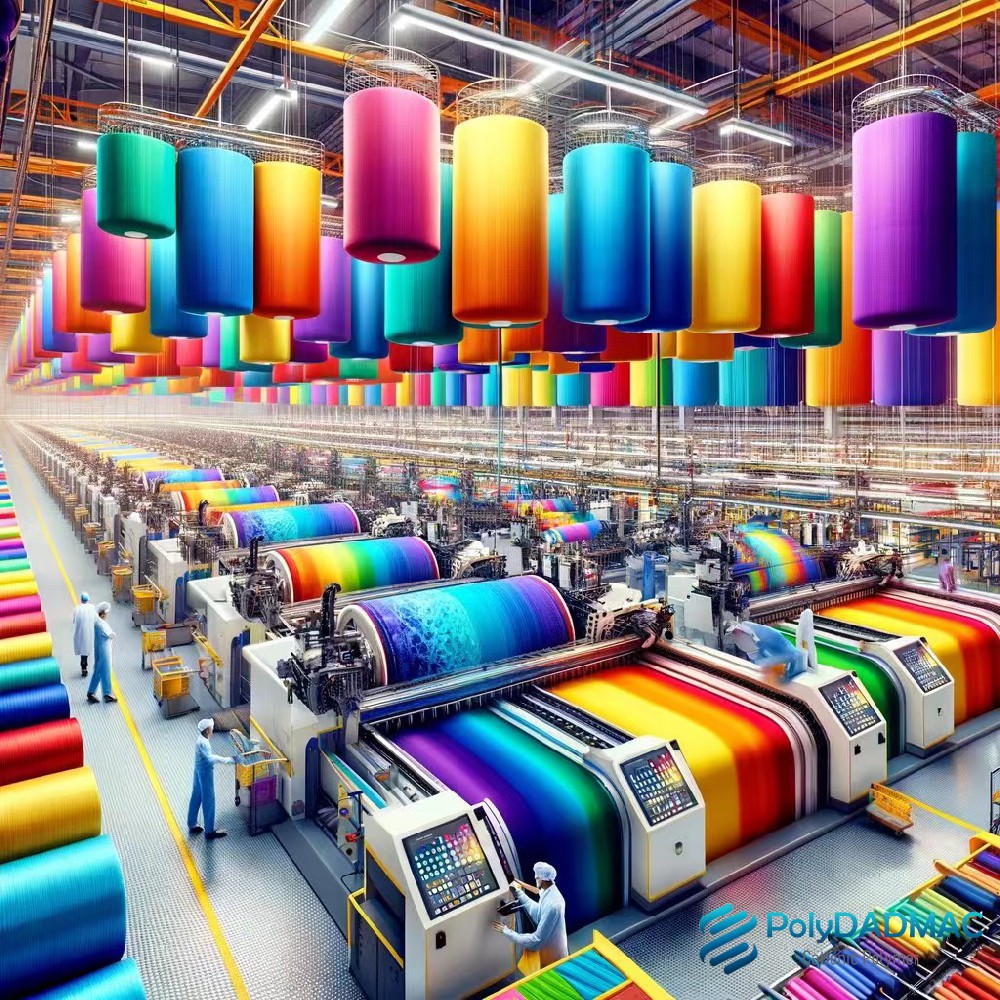Polydadmac, or Polydiallyldimethylammonium Chloride, has several applications in the textile printing and dyeing industry. Its cationic nature allows it to interact effectively with anionic substances commonly found in fabrics and dyes, thereby improving various processes in this sector:
 1.Printing Paste Thickener:
1.Printing Paste Thickener:
In textile printing, polydadmac is used as a thickener for printing pastes to enhance printability and stability of the design on fabric. It helps to improve the viscosity and adhesion properties of the paste, ensuring that the printed designs adhere well to the fabric without spreading.
2. Dye Fixation:
As a cationic polymer, polydadmac can act as a fixing agent, enhancing the bond between the dye molecules and the fabric fibers, particularly for cellulosic materials like cotton. It improves colorfastness by reducing dye migration and leaching during washing or cleaning processes.
3. Fiber Modification and Softening:
Polydadmac can be applied as a fiber treatment agent to modify the surface properties of fabrics, making them softer and easier to handle. This improves the overall feel and texture of the final product.
4. Anti-static Agent:
The presence of positively charged groups in polydadmac makes it useful as an anti-static agent, reducing static electricity buildup on synthetic fibers during processing and handling.
5. Effluent Treatment:
In textile wastewater treatment, polydadmac is often used as a coagulant and flocculant to help aggregate and remove suspended solids, dyes, and other pollutants from the effluent water. This aids in meeting environmental regulations and reducing water pollution.
6. Enhancing Dye Penetration:
By neutralizing negative charges on the fabric's surface, polydadmac can improve the penetration of dyestuffs into the fibers, leading to more uniform coloring and better coverage.
Overall, polydadmac contributes significantly to process efficiency and product quality improvement in the textile printing and dyeing industry through its multifunctional capabilities.